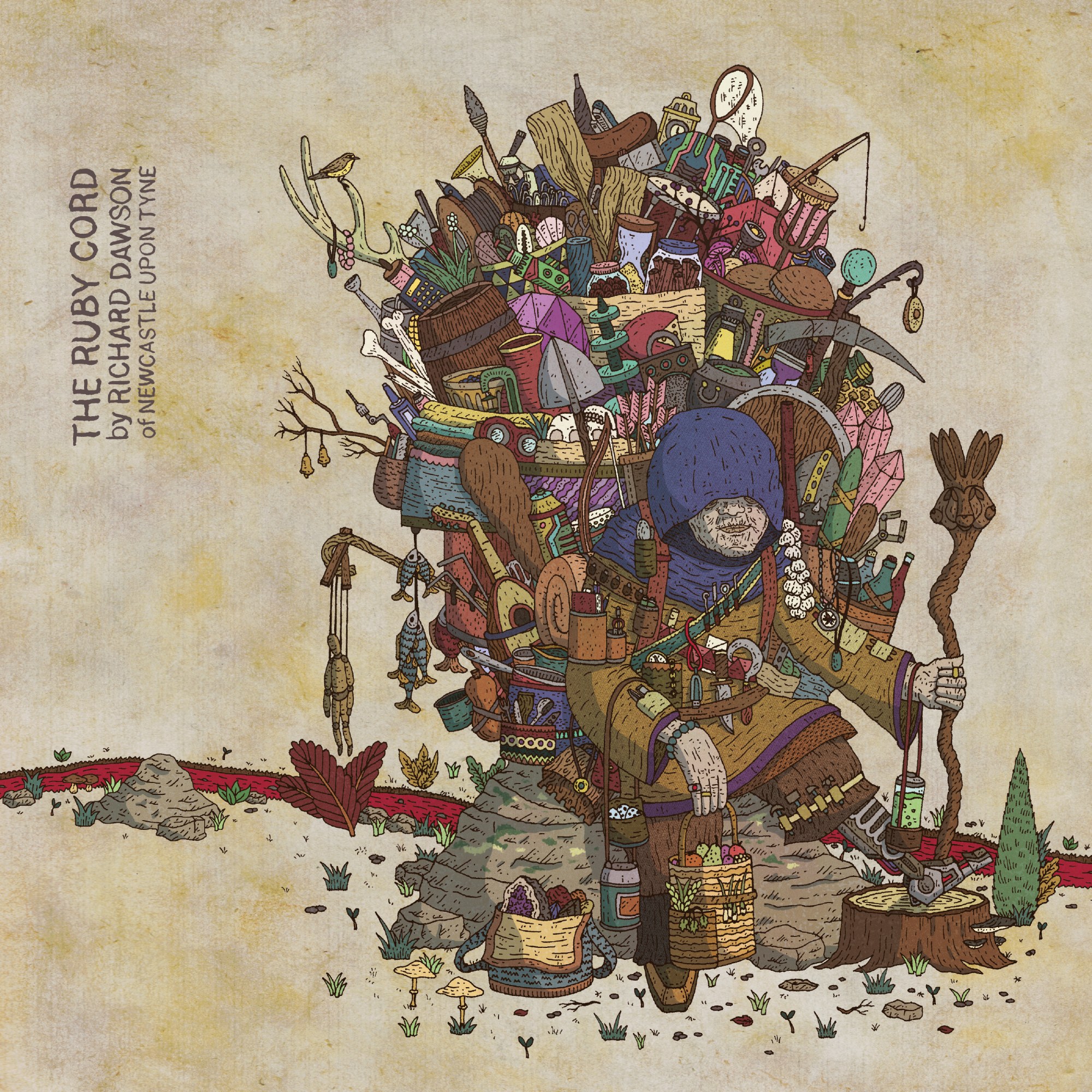Against the loss of civilization comes the advent of futuristic technologies. “A bounty of data” is reachable at the “merest flick of a lash”, yet these gains bring scant consolation. As ‘The Fool’ would have it, the only force that necessitates survival is love, a force “older than the sun” and thus an anachronism in a world shaped by the need for constant evolution.
As is probably apparent, The Ruby Cord’s lyrical world is cast in tropes recurrent in imagined dystopias and science fiction. There’s an obvious absurdity to proceedings but Richard Dawson’s sheer conviction encourages the listener to take these leaps of faith. In other hands ‘The Fool’s’ tale of an ill fated, seasonal romance, set in a world populated by “cross-eyed juveniles” who navgate “flyboats”, and wander “almshouse catacombs” would be a stretch too far. But Dawson’s giddying vocals are allowed to joyride through octaves as the assonance of this rich language is revelled in. Furthermore these pieces of time tourism invariably showcase his great gift for storytelling.
‘The Fool’ begins by depicting its central character as someone oft seen through the lens of “prisming beer”; the performative absurdity that follows this drunken revelry is a strain but a concession made to garner popularity. The first verse unexpectedly meditates on the social pressures often unwillingly assumed by a heavy drinker, revealing a nuanced and empathetic take. One can’t help but recall the references to alcohol in ‘The Vile Stuff’; in that song, a younger character relents to the pressures of teenage binge drinking so as to socially assimilate and here, this social pressure has led to a fractious relationship with the self, done in order to make quick companionships. “I play the role of the fool… / to the newly arrived here / not as I am but how they prefer”.
Whilst lyrically these tracks are very much akin to the other two thirds of this trilogy, sonically there’s a clear departure from 2020. Largely gone are the bombastic multi-instrumental work-outs, and back is the more tonally consistent and limited palette of Peasant. 2020 expanded Dawson’s fanbase with killer singles and an endearingly wonky take on a spirited brand of prog-pop, and if such a thing as ‘crossover appeal’ still exists then after 2020 Dawson was primed for it. The Ruby Cord however, begins in the most uncompromising fashion imaginable, with a track the length of most albums.
To say patience is required of a 40-minute song seems fairly obvious, but from the off it’s utterly gorgeous, starting with a lengthy passage of ebbing and flowing instrumental free-form folk that gently undulates. The likes of No Neck Blues Band (or more recently Caroline) are brought to mind as freshly-tuned instruments begin a tentative conversation with one another. Dawson’s guitar is paired with Angharad Davies’s violin, the harp of Rhodri Davis and Andrew Cheetham’s drums, and together they create a delicate nest of interwoven parts that float gracefully for 11 minutes before the arrival of the singer’s unmistakable vocals.
After the dawn delicacy of the song’s beginning a more menacing prevailing part takes over. Here a characteristically knotty vocal melody cycles around as if chasing its own tail, then a flurry of energy is contrasted with a moment of clarity, as all instruments drop out and the words being sung are acapella. Dawson regularly starts his live sets with an unaccompanied voice, but to allow this to happen (twice) for extended periods on one song seems especially daring. It’s captivating and leads perfectly to the track’s glorious finale. Haunted, and akin to the muted majesty of Low, a repeated refrain is repeated with layered vocals in harmony. It’s beautiful and desolate too; thus pairing itself perfectly to the landscape that’s being described.
Sonically, The Ruby Cord expands into an endless vista, while lyrically it takes our most human desires and places them further than our current reality into a setting that’s mired in an unease that won’t shift. Over this trilogy of records, location and time has shifted but the hopes and fears of the characters within are every bit as real as the places that formed ‘The Vile Stuff’s psychogeography.
